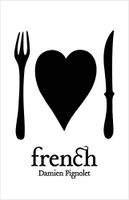Advertisement
Trussing Poultry and Meat
Appears in
Published 2005
Poultry and some cuts of meat cook more evenly if they are secured with cooking twine; additionally, this technique helps in the presentation. For example, braised beef oyster blade or a roast of scotch fillet benefit from being tied at 1.5cm intervals.
To truss a chicken, use a 70cm length of cooking twine. Knot the middle of the twine around the parson’s nose, then cross the twine and loop it around each leg, drawing them together and tying another knot. Run the twine between the breast and the drumstick on both sides and secure with a knot underneath. Pass the twine around each wing and tie another knot underneath. This technique applies to virtually all poultry and game birds, and makes carving much easier.


